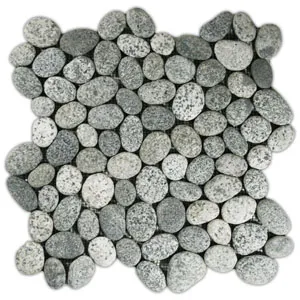Natural stone tiles are a stunning choice for homeowners and designers alike, offering a blend of beauty, durability, and versatility. This article explores the various types of natural stone tiles, their applications, and tips for maintenance, making it an essential resource for anyone considering this elegant flooring option.
Understanding Natural Stone Tiles
Natural stone tiles are made from quarried stone and are cut into specific sizes and shapes for use in construction and design. Unlike manufactured tiles, natural stone offers unique textures, patterns, and colors that cannot be replicated. Common types of natural stone tiles include:
- Marble: Known for its luxurious appearance and smooth surface, marble comes in a variety of colors and veining patterns. It is often used in bathrooms and living areas.
- Granite: Renowned for its durability and resistance to scratches and heat, granite is ideal for kitchen countertops and flooring. Its natural flecks and speckles create a vibrant look.
- Slate: With its rich, earthy tones and textured surface, slate is perfect for outdoor patios and walkways. It’s slip-resistant, making it a safe choice for areas prone to moisture.
- Travertine: This stone has a distinctive pitted surface, giving it a rustic charm. Travertine is often used in outdoor spaces and can be found in various finishes, from polished to honed.
- Limestone: With its soft, natural colors, limestone creates a warm and inviting atmosphere. It is commonly used in living areas and is known for its porous nature, which requires regular sealing.
Benefits of Using Natural Stone Tiles
Natural stone tiles offer several advantages, making them a preferred choice for many:
- Aesthetic Appeal: The unique patterns and colors of natural stone add character and sophistication to any space. Each tile tells a story, showcasing the beauty of nature.
- Durability: Natural stone is incredibly durable and can withstand heavy foot traffic, making it suitable for both residential and commercial spaces. With proper care, stone tiles can last for decades.
- Low Maintenance: While some types of stone require sealing, most natural stone tiles are easy to clean. Regular sweeping and mopping are usually sufficient to keep them looking their best.
- Versatility: Natural stone tiles can be used in various applications, from floors and walls to backsplashes and outdoor patios. They can complement different design styles, from traditional to modern.
- Sustainability: As a natural product, stone is environmentally friendly. Many stone quarries practice sustainable mining, ensuring minimal impact on the environment.
Choosing the Right Natural Stone Tile
When selecting natural stone tiles, consider the following factors:
- Location: Determine where the tiles will be installed. High-moisture areas, like bathrooms, may require specific types of stone that can withstand humidity.
- Style: Consider your overall design aesthetic. Different stones offer various looks; for example, sleek marble is perfect for a modern space, while rustic slate complements a farmhouse style.
- Finish: Stone tiles come in various finishes, including polished, honed, and tumbled. Polished tiles are shiny and sophisticated, while honed tiles have a matte finish and a more natural look.
- Color: Choose a color that fits your design scheme. Neutral tones like beige, gray, and cream are versatile, while bold colors can make a statement.
Installation Tips for Natural Stone Tiles
Proper installation is crucial to the longevity and appearance of natural stone tiles. Here are some tips:
- Professional Installation: While DIY projects can be rewarding, hiring a professional installer experienced with natural stone is recommended. They can ensure proper alignment, cutting, and grouting.
- Subfloor Preparation: Ensure the subfloor is level and stable before installation. Any imperfections can affect the appearance and durability of the tiles.
- Use the Right Adhesive: Different types of natural stone may require specific adhesives. Always follow the manufacturer’s recommendations for the best results.
- Grouting: Choose a grout color that complements the tiles. Epoxy grout is recommended for high-moisture areas, as it is resistant to staining and mildew.
- Sealing: Many natural stones require sealing to protect against moisture and stains. Apply a quality sealant according to the manufacturer’s instructions.
Maintaining Natural Stone Tiles
To keep your natural stone tiles looking their best, follow these maintenance tips:
- Regular Cleaning: Sweep or vacuum regularly to remove dirt and debris. Use a damp mop with a pH-balanced stone cleaner to clean the tiles.
- Avoid Harsh Chemicals: Stay away from acidic cleaners, as they can damage the stone’s surface. Always use products specifically designed for natural stone.
- Sealant Application: Reapply sealant every 1-3 years, depending on the type of stone and usage. This helps maintain the stone’s beauty and longevity.
- Address Stains Promptly: If spills occur, clean them immediately. For tough stains, consider using a poultice specifically designed for natural stone.
Conclusion
Natural stone tile are an exquisite choice for those seeking elegance, durability, and versatility in their flooring and design. By understanding the various types of stone, their benefits, and proper maintenance, homeowners can create stunning spaces that reflect their personal style while enjoying the timeless beauty of nature.

